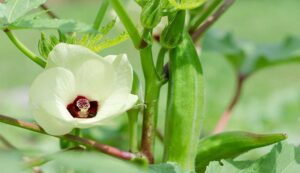Okra Farming: If the leaves of ladyfinger have fallen and turned yellow, then do this work immediately
Okra Farming: Okra is a vegetable that is grown throughout the year. However, its first sowing takes place in February and March. Production starts in May, about two months after sowing the seeds. Due to extreme heat in May, farmers have to give extra water to the crop during this period. If farmers do not give water on time, the crop may dry up. Sometimes, diseases and pests also start attacking it, causing losses to farmers. Tell us which disease affects Hindi produce this month and how to avoid it in such a situation.

Diseases and prevention
In May, farmers should be careful. Mosaic and leaf curl diseases are more prevalent, especially in the okra crop. Whiteflies spread diseases, including mosaic and leaf curl. Mosaic causes the veins of the leaves to turn yellow and small yellow spots appear on the leaves. The green part of the leaves forms small pits when it curls. To protect ladyfingers from this disease, spray Acetamiprid (3 gm/10 liters of water) or Confidor-200 SL (0.3-0.5 ml/liter of water) as per the requirement at an interval of 15 days. Apart from this, make a solution of two gm per liter of water and spray it once again. By doing this, the crop remains safe from harmful diseases.
Prevention of ladyfinger pests
An insect called the pod stem borer pierces the pod, which damages the seeds inside. Therefore, the pod is not edible. These insects pierce even the last soft branches of the plant. As a result, the upper part of the plant withers. To control this insect, use Spinosad 1 ml or Emamectin Benzoate 2 gm/10 liters. When you mix it in three liters of water and put the parasitic Trichoderma in the field, the infestation of this insect is reduced considerably. Apart from this, Cypermethrin should be dissolved in 0.5 ml/liter of water and sprayed every 15 days to eliminate insects that eat okra leaves. This controls pests called pod stem borers.
Keep these things in mind while cultivating
According to experts, farmers should water okra at an interval of ten to twelve days in May. As a result, the plants grow quickly. Also, growers should be careful while picking okra after applying all these pesticides. Pick okra exactly five days after spraying the pesticide to reduce the effect of the drug; otherwise, it can be dangerous for human health.

